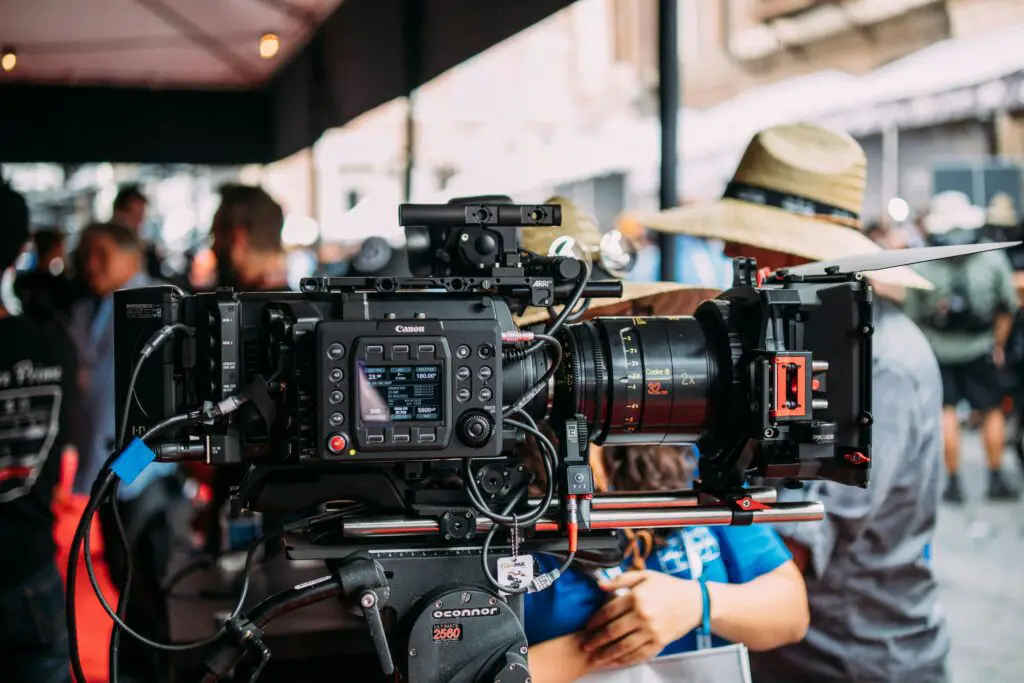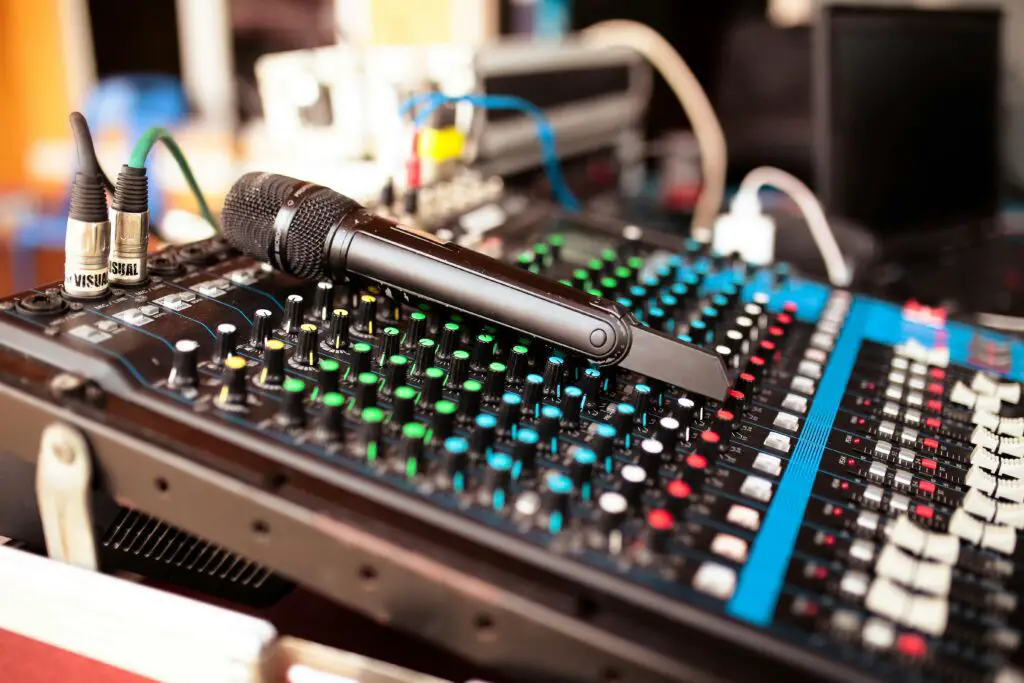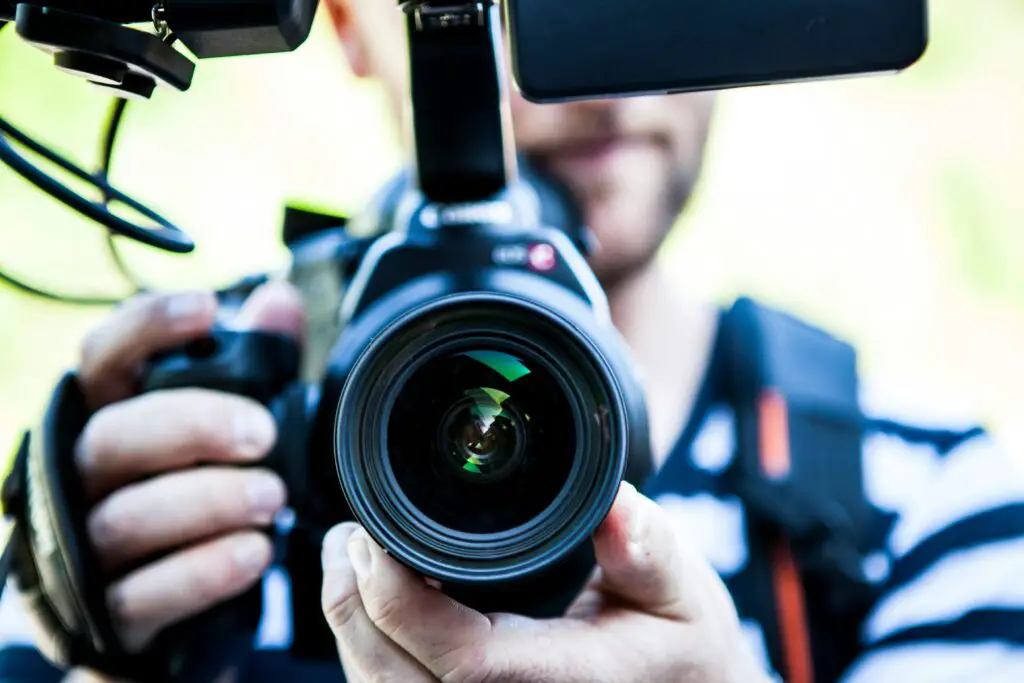Many types of equipment used in film and video production. The most commonly used equipment are cameras, tripods, camera stabilizer mounts, microphones, mixers, and lights.



Choosing the right equipment for film and video production depends on several factors including your budget, the type of project, and the specific needs of the shoot. Here’s a step-by-step guide to help you find the right equipment:
Understand the Type of Project
The first step is to define the type of film or video production you’re working on:
- Short films, feature films, or documentaries: These might require different equipment based on the scale and style of production.
- Music videos, commercials, or corporate videos: Often require specific lenses, cameras, and lighting to create a high-quality, polished look.
- Social media content or vlogs: These may require simpler setups but should still prioritize video and audio quality.
How to Find the Right Type of Equipment for Film and Video Production
Selecting the right equipment for film and video production is critical to achieving high-quality results. Whether you’re working on a feature film, commercial, documentary, or YouTube video, having the right tools can make a significant difference in the outcome of your project. With so many options available, the task can be daunting. Here’s a guide on how to find the right equipment for your specific needs.
1. Determine Your Production Needs and Budget
Before purchasing any equipment, it’s important to define the scope and scale of your project. The type of production—whether it’s a small indie project or a large commercial—will influence what equipment is essential. Here are a few key considerations:
Project Scale: Small projects may not need the high-end gear used in large productions. For instance, a DSLR camera could be sufficient for a short film or YouTube video, while a feature film may require a high-end digital cinema camera like the ARRI Alexa or RED Komodo.
Genre and Style: A documentary may require portable, lightweight equipment for quick setups, while a music video may demand high-end lighting and camera rigs to achieve specific looks.
Budget: Your budget will heavily influence what equipment you can afford. It’s important to balance quality with cost. Renting gear is a great option for high-end equipment that may not fit within your budget for purchase.
2. Choose the Right Camera
The camera is often the centerpiece of a video production. It’s essential to select one that matches your production style, budget, and technical requirements. Key factors to consider include:
Resolution: Today, most production uses cameras that can shoot in 4K or higher. However, if you’re producing content for platforms that only support 1080p (like certain social media channels), 4K may be unnecessary.
Sensor Size: Larger sensors typically provide a shallower depth of field and better low-light performance. Cameras with full-frame sensors are often used in cinematic projects, while Super 35mm sensors are common in film and TV.
Frame Rate: If you plan to shoot slow-motion footage, choose a camera that can record at higher frame rates, such as 120fps or 240fps. Most professional cameras can shoot at 24fps for a cinematic look.
Portability: Smaller cameras such as mirrorless or DSLR cameras are ideal for tight spaces or handheld shots, while larger cinema cameras are more appropriate for controlled studio environments.
Popular camera brands include Canon, Sony, RED, ARRI, and Panasonic, with each offering a variety of models suited to different levels of production.
3. Select the Right Lenses
Lenses play a huge role in shaping the aesthetic of a film. The lens you choose impacts the depth of field, field of view, and overall look of your shot. Consider the following:
Prime vs. Zoom: Prime lenses have a fixed focal length, offering sharper images and better low-light performance. Zoom lenses provide flexibility by offering variable focal lengths, which are useful for fast-paced or dynamic shoots.
Focal Length: The focal length determines the field of view and the amount of background blur (bokeh effect). For example, a 50mm lens gives a natural perspective, while a wide-angle lens (such as 24mm) captures a broader scene, and telephoto lenses (such as 85mm or longer) bring distant subjects closer.
Aperture: The aperture size (measured in f-stops) influences the amount of light that enters the lens and the depth of field. Lenses with a wider aperture (such as f/1.4) are better for low-light environments and achieving a shallow depth of field.
4. Lighting Equipment
Lighting is a crucial element that can dramatically affect the mood, tone, and quality of your shots. The right lighting setup can elevate the professionalism of your video. Consider these options:
LED Lights: These are energy-efficient, portable, and versatile. They also allow for precise control over color temperature and intensity.
Softboxes and Diffusers: Softboxes help create soft, even light by diffusing harsh light sources. They are especially useful in portrait shoots or interviews.
Key, Fill, and Back Lighting: This classic three-point lighting setup is used to create depth and dimension on your subjects. The key light illuminates the subject, the fill light reduces shadows, and the backlight separates the subject from the background.
Popular brands in lighting include Arri, Aputure, and Godox.
5. Audio Equipment
Good audio is just as important as good visuals. Bad sound can ruin an otherwise fantastic video. Here are some key audio tools to consider:
Microphones: The type of microphone you choose depends on the production. Lavalier microphones are excellent for interviews and dialogue, shotgun microphones are ideal for capturing directional sound, and condenser mics are great for studio environments.
Audio Recorders: While many cameras have built-in microphones, using an external recorder provides higher-quality audio. The Zoom H5 or H6 are popular choices for portable audio recorders.
Boom Poles and Windshields: For capturing clean audio on set, a boom pole with a shotgun mic and a windscreen (to reduce wind noise) is essential in many shooting environments.
Brands like Rode, Sennheiser, and Shure provide high-quality audio equipment for filmmakers.
6. Stabilization and Support
Smooth, stable footage is essential, especially for dynamic camera movements. To achieve steady shots, consider the following:
Tripods: For static shots, a reliable tripod is essential. Look for a tripod that offers smooth panning and tilting motion.
Gimbals: For handheld, moving shots, gimbals are indispensable. They allow for smooth, stabilized shots even in motion. Popular models include the DJI Ronin and the Zhiyun Crane.
Sliders and Jibs: Sliders provide smooth horizontal motion, while jibs allow for vertical camera movements. These tools are essential for creating cinematic, dynamic shots.
7. Post-Production Software
After the filming is done, post-production software helps you bring your vision to life. Some of the most popular programs include:
Editing: Adobe Premiere Pro, Final Cut Pro, and DaVinci Resolve are industry standards for video editing.
Color Grading: DaVinci Resolve is renowned for its color grading capabilities. This software helps enhance the look and feel of your footage to match the desired mood of your project.
Sound Design: Tools like Adobe Audition and Pro Tools are essential for mixing and refining your audio tracks.
8. Other Accessories
Batteries and Chargers: Always have spare batteries and chargers on hand, as filming can quickly drain battery life.
Memory Cards: High-quality, fast memory cards are necessary for storing large video files, especially if you’re shooting in high resolutions like 4K.
Storage Solutions: Invest in reliable hard drives or cloud storage for backing up footage. SSDs are faster and more durable than traditional hard drives.
In Conclusion, choosing the right equipment for film and video production involves understanding your production needs, budget, and the type of content you’re creating. While there is no one-size-fits-all solution, focusing on the essentials—camera, lenses, lighting, audio, stabilization, and post-production tools—will help you achieve professional results. Remember, the best equipment is not always the most expensive; it’s the gear that allows you to tell your story in the most compelling way.
Audio and Accessories
| Audio-Technica | Polsen | Shure |
| BOYA | RODE | Sony |
| Countryman | Saramonic | SmallRig |
| Deity | Senal | Tentacle |
| Electro-Voice | Sennheiser | Zoom |
Batteries and Chargers
Cameras
Camera Accessories
(Bags, Filters, Lens, Rigs, Steadicam, Tripods, etc)
Camera Rentals
| AA Rental | Hartford Technology Rental |
| Aperturent | PRG GEAR |
| Borrow Lenses | REDSTAR |
| DC Camera | Visualnet |
| Expressway Cinema Rentals |
Drapery and Fabric
Fog Machines and Fog Fluid
Free Music
Free Photos
Free Video Footage
Gaffer’s Accessories
Grip Equipment
Grip and Lighting Equipment Rentals
Lights
| Altman | Dedolight | Kino Flo |
| American DJ | Chimera Lighting | Lowel |
| Arri | Frezzi | Mole Richardson |
| Chimera | Interelectric | Techni-Lux |
| Cinemills | K5600 | Ushio |
Lighting Accessories
Light Meters
Scriptwriting Software
Video Editing Software
